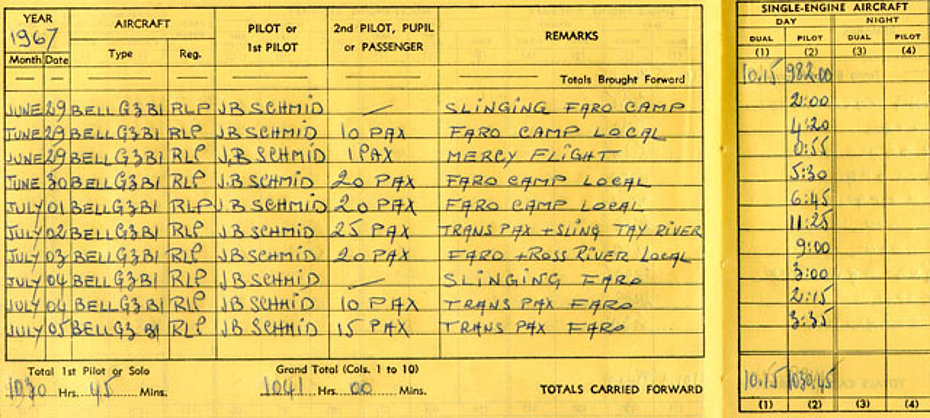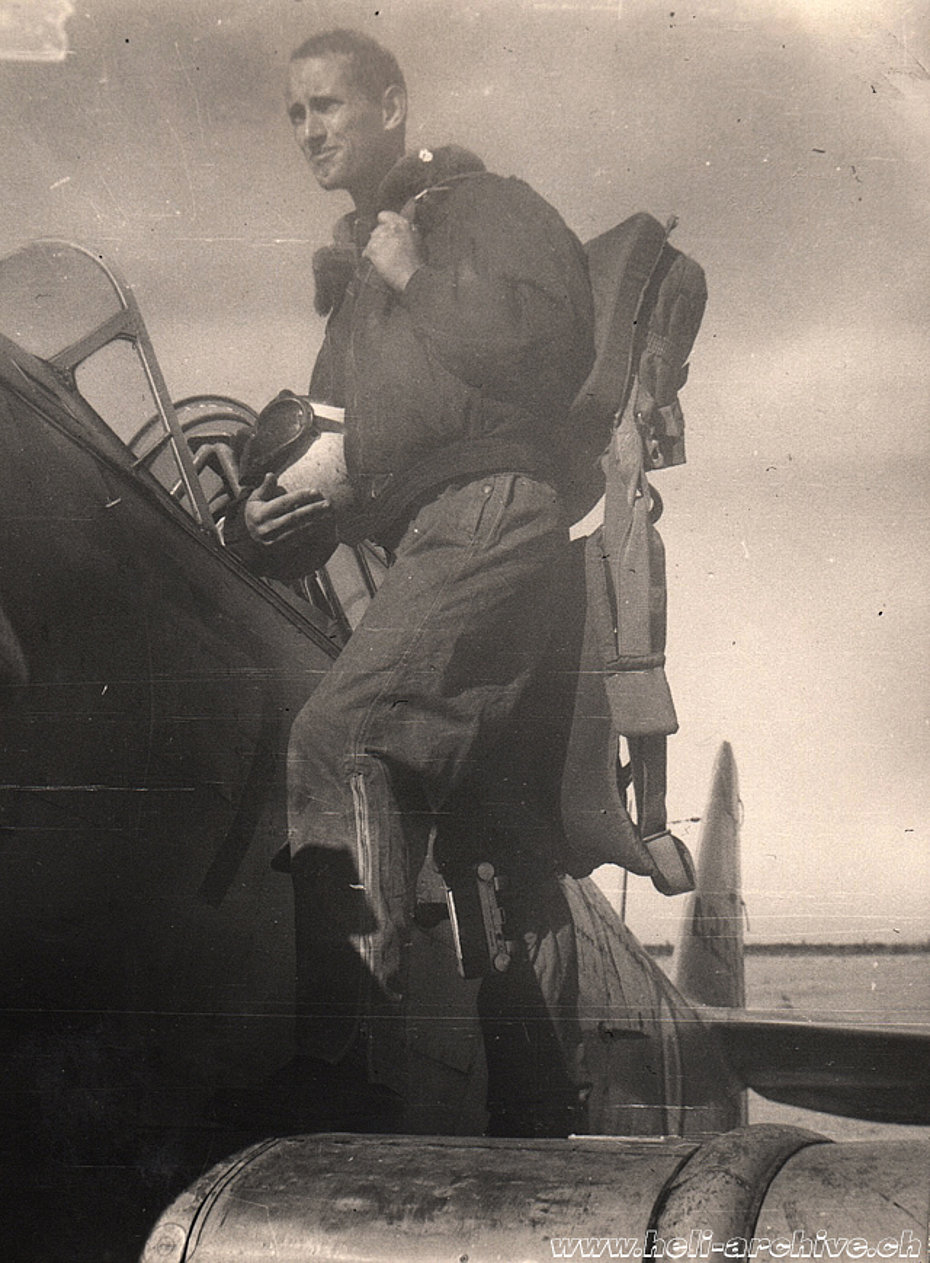
Schmid Jean-Bernard
Jean-Bernard Schmid, nicknamed "Jibi" (pronounced Gee Bee) by his friends, was born in Belfort (France) on February 20, 1937 where he attended primary and secondary school. In 1952 he enrolled in high school in Saint-Germain-en-Laye near Paris, known for being one of the most prestigious and famous of the country after which he continued his studies at the Ecole alsacienne in Paris. Then at the University of Paris he enrolled at the Faculty of Law and Economics for the terms of 1957-1958. Successfully completing the first year, he left university in 1959 to meet his military obligations.
After his military service, which lasted 18 months, (let us remember that at the time the war in Algeria was still ongoing) he decided to permanently stop his studies and so, after passing the entrance exam, he signed a five-year contract with the Armée de l'Air Française (AAF) to be trained as a pilot. He was then sent to Marrakech (Morocco), where in April 1959 he began the flight training on the airplane AAC. 1 "Toucan" (a French version built after the second world war of the famous Junkers Ju 52). In September 1959 he began to fly the North American T-6 Texan. In March 1960 he finished the training course on this aircraft with a total of 131h20’ flight time.
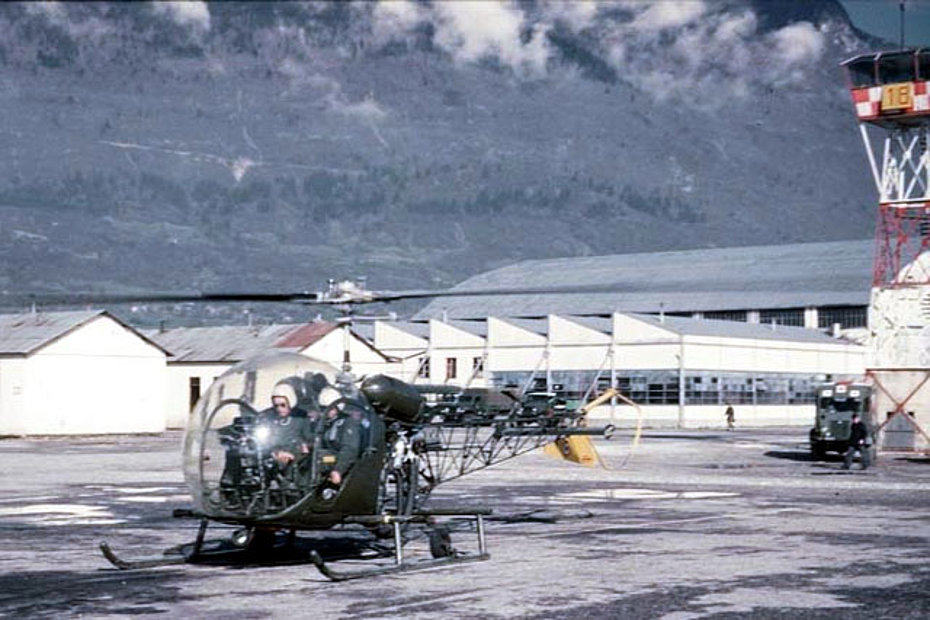
Helicopter pilot
On April 19, 1960 he began, at the Air Base 725 "Division instruction hélicoptères" based in Le Bourget-du-Lac, the basic school as helicopter pilot on the Bell 47G2 that ended on June 27, 1960 after 51h flight time.
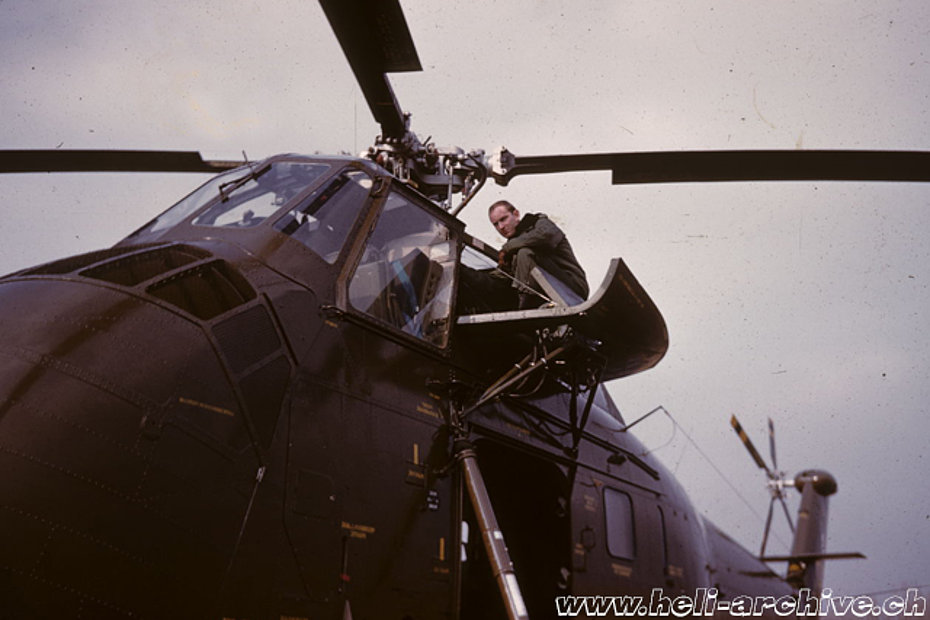
As of July 6, he began the training course on the Sikorsky H-19 / S-55 that ended on December 7, 1960 after having accumulated 48h25’ flight time.
On December 19 he began the training course on the Sikorsky H-34 / S-58. On board of this big helicopter he accumulated a considerable experience, specifically 952h of flight time, of which 771h40' as pilot in command.
In 1961-1962 he was incorporated as a pilot in the 22nd Helicopter Squadron based in Algiers and later at the 23rd Helicopter Squadron at Oran. As a helicopter pilot he carried troops, material and weapons.
Among the more than 200 missions during the Algerian war he flew for tactical reconnaissance, observation of artillery fire, sea patrols, transport in various war zones, medical evacuations and launch of commando-paratroopers.
At the end of the conflict in Algeria Jean-Bernard Schmid returned to France where between 1963 and 1964 he carried out his activities within the "High Mountain" squadron based in Chambéry performing troop transports and tactical manoeuvres in the French Alps using almost exclusively the Sikorsky H-34 / S-58.
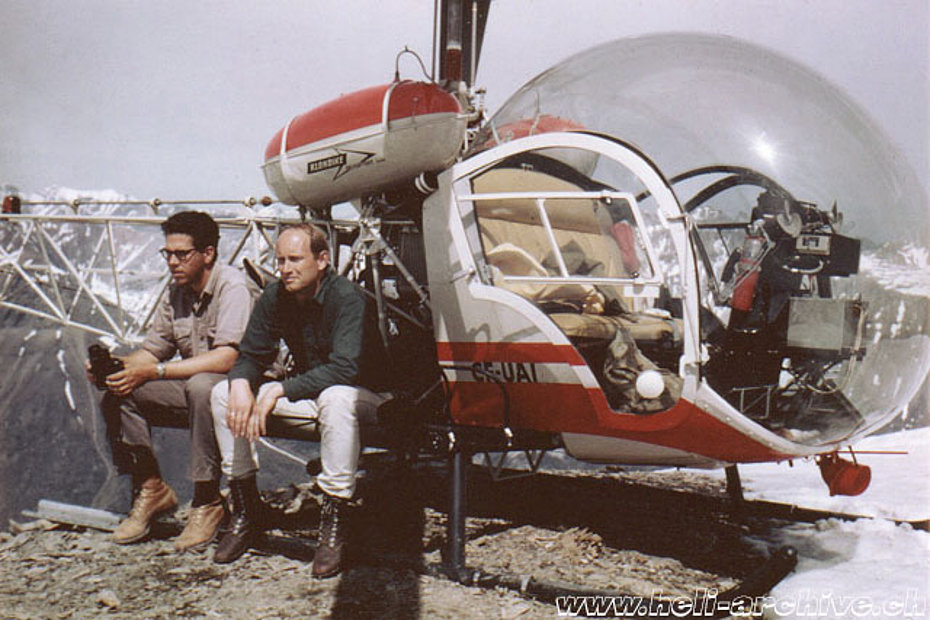
At that time he was also instructed to fly the SE 3130 Alouette 2 on which however he logged only 14h20' and the SE 3160 Alouette 3 on which he scored only 50'.
Between 1964 and 1966 (the year when his contract expired with the AAF) he was pilot and squadron instructor on helicopters Sikorsky H-34 / S-58 at Villacoublay with the rank of sergeant. In 1965 he was issued his civil aircraft private pilot license by the Ministry of Public Works, Transport and Tourism.
The following year, instead of renewing the contract with AAF he decided to leave the military life. On 15 March 1966 he made his last flight as a military pilot and a few days later took leave of fellow soldiers. Like many, he chose to continue his flying activity in the civil sector.
Early civil career
Taken off the military uniform, together with his wife Marie-Fançoise and young son Eric born in 1963 in Chambéry, Jean-Bernard Schmid moved to Canada after having signed an employment contract as a helicopter pilot with Klondike Helicopters Ltd. based in Whitehorse in the Yukon territory.
This company of heli services which had been founded in 1956 by Pat Callison, was the first operator of helicopters to be based in the Yukon region.
At the time Klondike Helicopters had various helicopters. Its fleet consisted of 11 Bell 47, 6 Hiller UH-12E, 1 Hiller SL-4, 1 Fairchild-Hiller FH1100.
From 6 to 17 May under the supervision of the head-pilot Jim Lapinski he carried out a series of flights to familiarize with the new work and the surrounding environment.
On May 19, 1966 after obtaining the commercial pilot license issued by the Canadian Department of Transport, he began an intense flight activity in the region of the Rocky Mountains - British Columbia, Yukon and the Northwest Territories initially piloting helicopters Bell 47G2s and then later the more powerful Bell 47G3, Bell 47G3B-1 and the Hiller UH-12E.
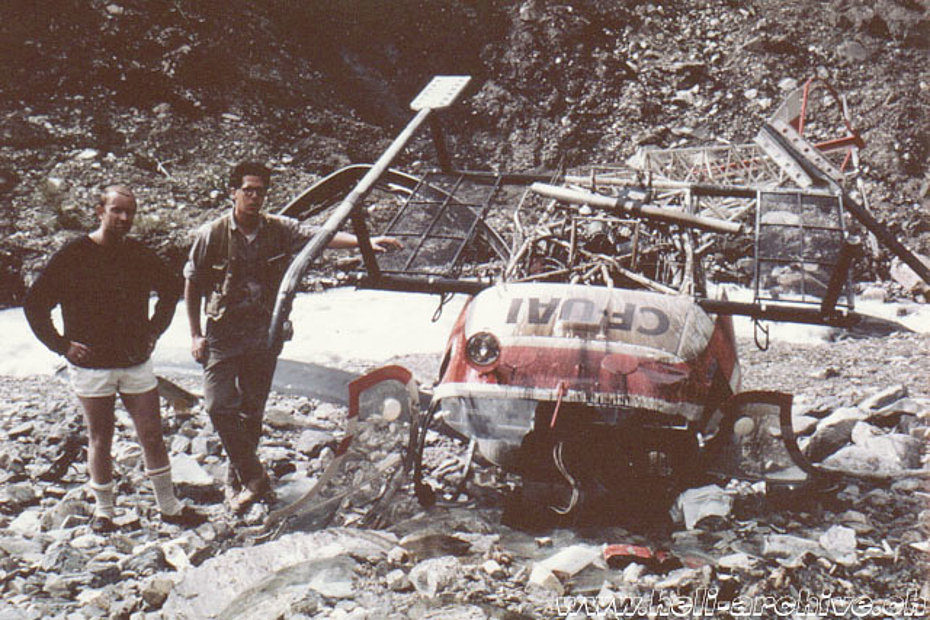
Unfortunately, on August 4, near Churchill Peak (British Columbia), during take-off the Bell 47G3 CF-IAU he was piloting clipped the ground and was badly damaged. Fortunately neither he nor the two passengers reported injuries.
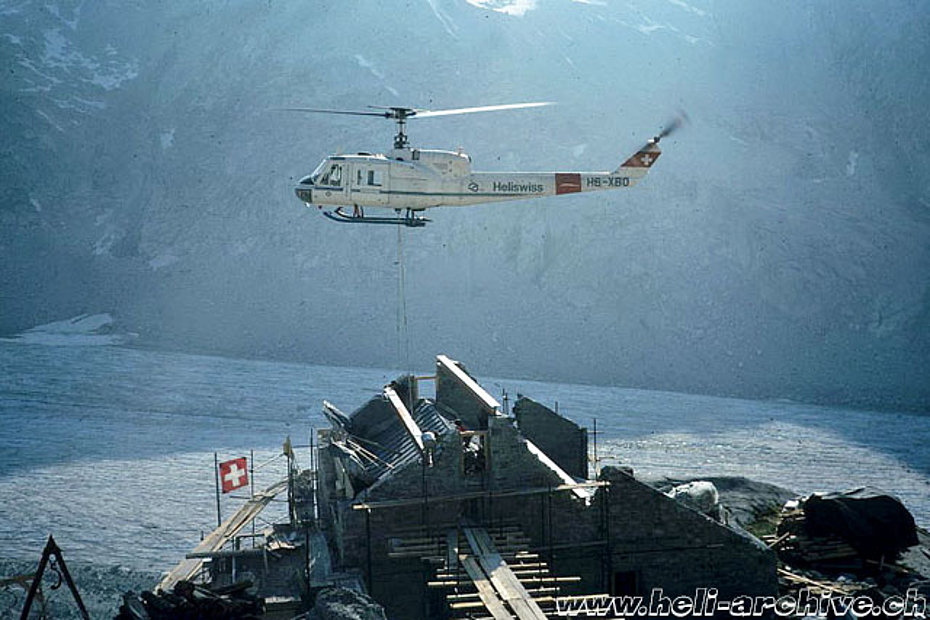
As a helicopter pilot he flew supply flights for teams of geologists, geophysicists and surveyors, transportation of people and goods, building materials and fighting forest fires.
On October 16, 1967 another accident unfortunately occurred while he was at the controls of the Bell 47G3B-1 CF-RLP. Immediately after releasing a suspended load the helicopter lost altitude and struck the top of some trees and then hit the ground. The cause of the accident was attributed to a loss of rotor rpm due to a mechanical problem.
Back in Europe
After nearly two years in North America (during which he accumulated a total of 1'800h flight) and two misadventures, Jean-Bernard Schmid returned to Europe.
Thanks to its considerable experience Heliswiss, the Swiss company based in Belp/Bern, had decided to hire him.
On March 13, 1968 the Federal Office for Civil Aviation FOCA) issued him the Swiss commercial pilot license No. 141 and a few weeks later, on April 1, 1968 he began to fly on behalf of his new employer.
During the first weeks he was trained on the Agusta-Bell 204B by the instructors Helmut Hugl, Walter Demuth and Walter Tschumi. On June 4, 1968 he began to fly as pilot in command in Laax GR where he was in charge of carrying several tons of construction material.
On July 3, on board the same helicopter he made the first of a long series of rescue missions in Chants/GR.
From December 7, he effected several flights on behalf of the crew that was shooting the film “On Her Majesty’s Secret Service” the sixth film of the James Bond saga. Jean-Bernard Schmid piloted one of three Agusta-Bell 204B that are seen in the film.
That same year his daughter Marianne was born.
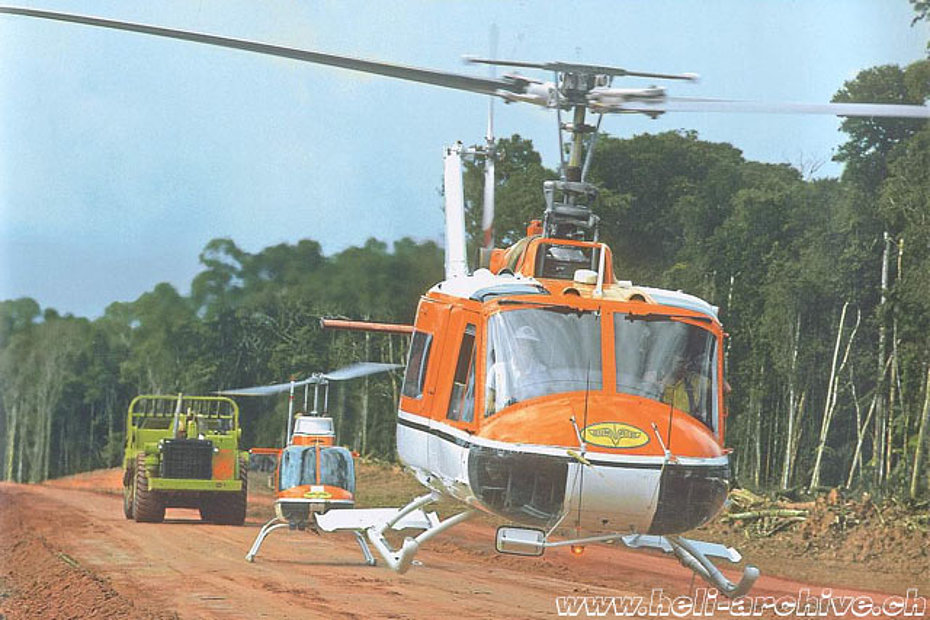
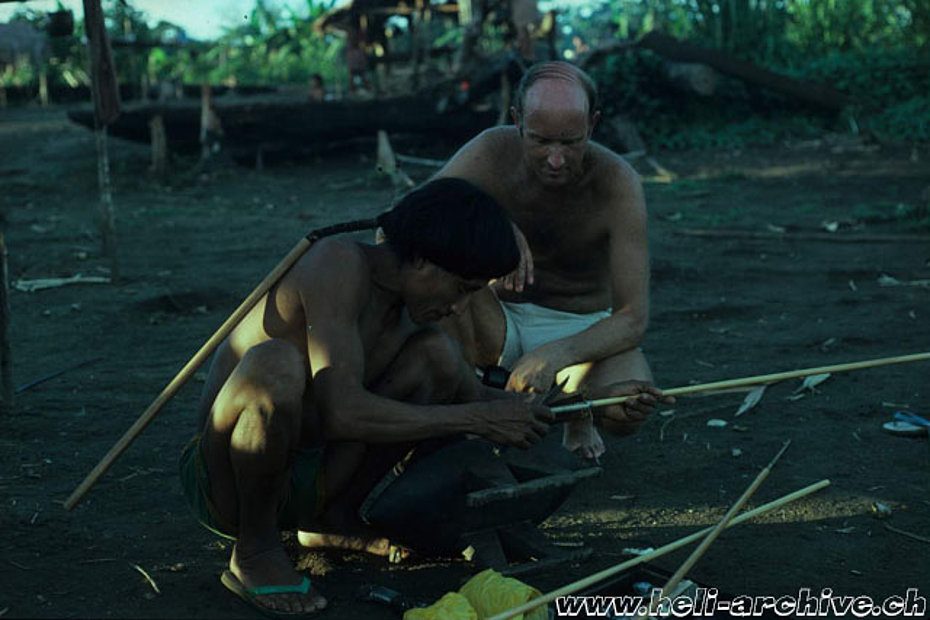
South America
From the second half of the '60s Heliswiss began again to play an important part of its business abroad. For that reason, Jean-Bernard Schmid on March 19, 1969 began to fly in Suriname with the Agusta-Bell 204B. He remained there until late May when he returned to Switzerland to resume his transport business.
During the following years, again on behalf of Heliswiss, he returned several times to the former Dutch colony in order to carry men and equipment in areas covered by dense equatorial forests.
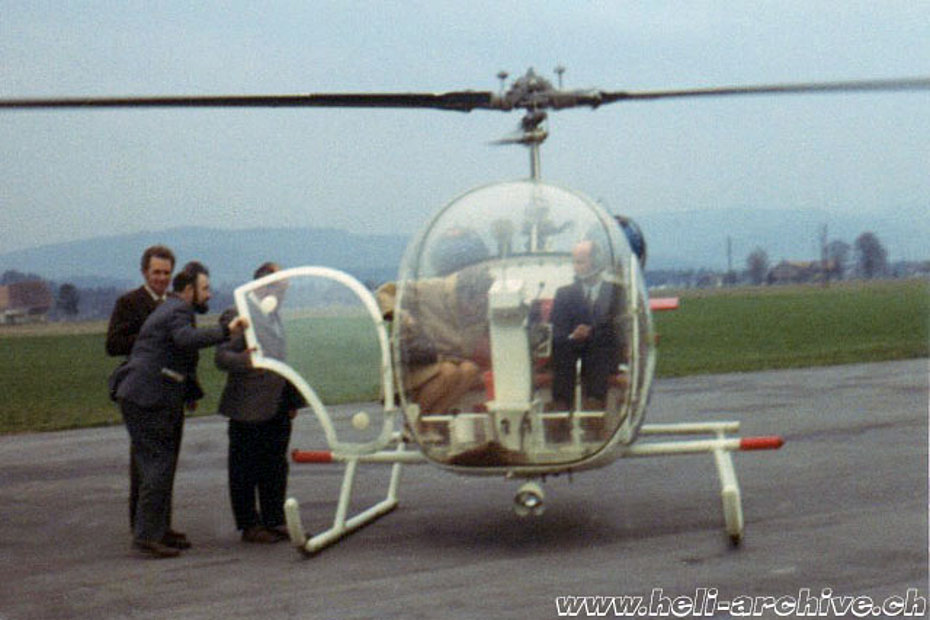
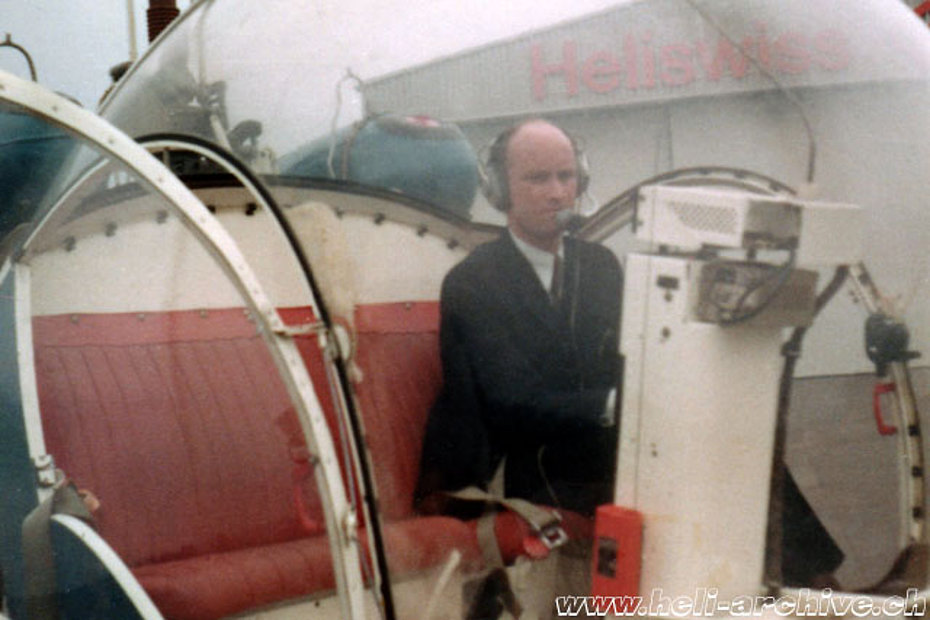
From August 3, 1970 he had the opportunity to follow a training course to pilot the SA 330 Puma in Marignane (France) where he was instructed by Charles Henry De Pirey. In fact Heliswiss intended to use this helicopter for heavy transport and assembly tasks. The use of this helicopter (F-ZWWR) was, however, limited. At Tann (Germany) Jean-Bernard flew as co-pilot with the already mentioned De Pirey. The two, using the same SA 330 Puma, proceeded with the aerial assembly of masts, an activity at the time carried out by very few European operators.
Jean-Bernard Schmid became a specialist in this kind of activity that requires great skill as well as also nerves of steel.
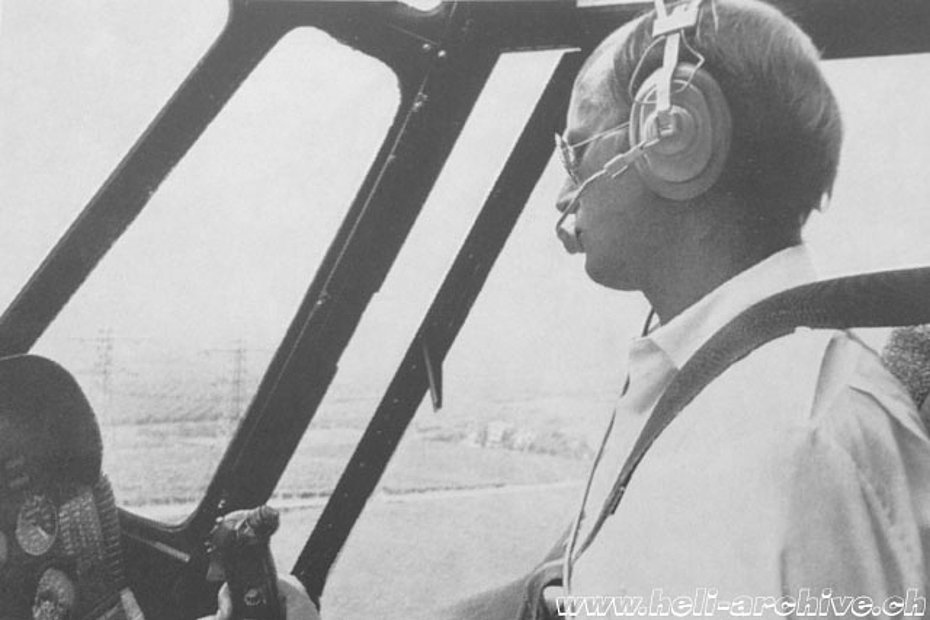
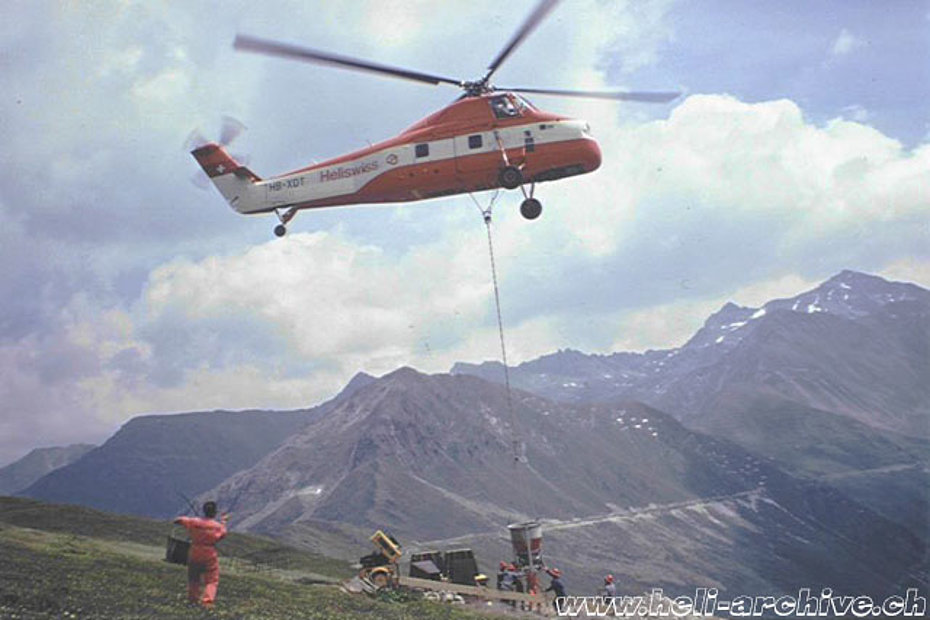
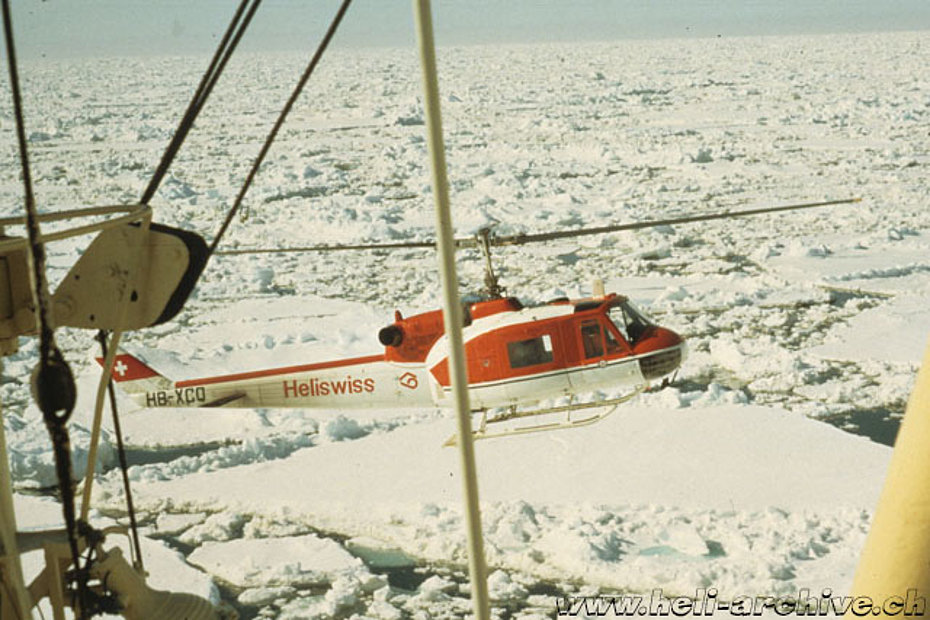
Transition on Sikorsky S-58T
On May 5, 1972 along with the chief-pilot Walter Tschumi he began in Stratford (Connecticut - USA) the transition course on the Sikorsky S-58T HB-XDT (the flight instructor was James Kay) that had just been purchased by Heliswiss. At the controls of this helicopter (at the time the largest and most powerful registered in Switzerland) he accumulated considerable experience doing many transportation flights and also aerial assembly.
Shortly after his return to Switzerland he was dispatched with three other pilots and two Agusta-Bell 204B, in addition to a group of mechanics, to the far north of Europe where Heliswiss had won a contract to discharge on the Spitsbergen island 2,500 tons of material (trasported on a merchant vassel) for the construction a of a drilling station.
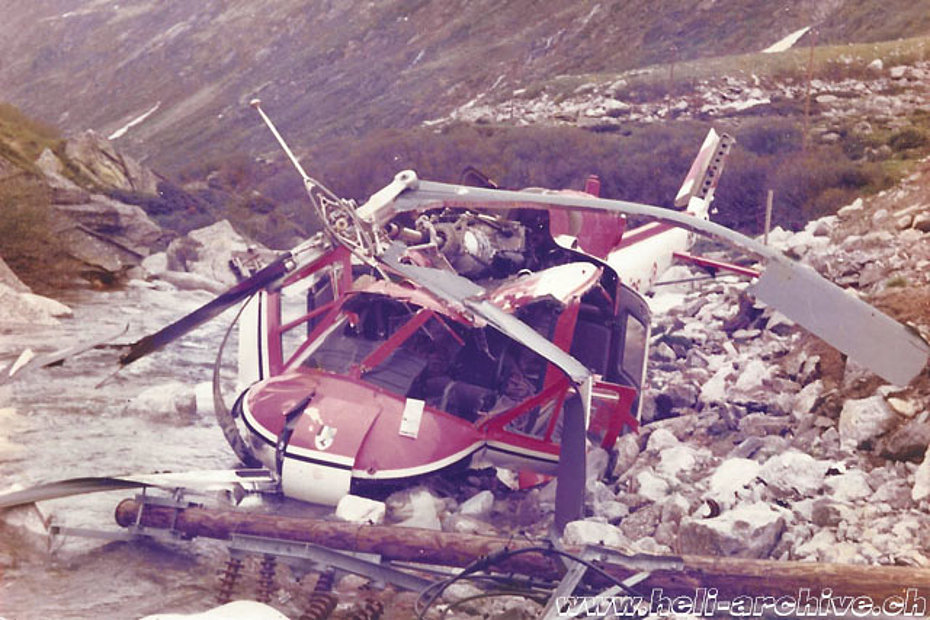
On his return he began the summer season, routine by now, transporting material all over Switzerland. In August he followed at the Locarno/TI airport the transition course on the SA 315B Lama.
On this same airport the following month of March he attended a flight course on the Hughes 500C with the instructor Franz Giakomini.
Transportation of material and aerial assembly
During the following years he flew intensively at the controls of the Sikorsky S-58T HB-XDT and Agusta-Bell 204B. These helicopters were employed in Switzerland and abroad, especially in Germany and Italy where at the time they lacked of experienced crews in aerial assembly work and did not have large helicopters for the transport of material.
In that period (1974) at the controls of the HB-XDT he worked intensely in Tunisia where the helicopter was used for offshore operations.
On June 17, 1976 Jean-Bernard Schmid obtained, among the first in Switzerland, a special permit for instrumental flying with helicopters after passing in Lausanne/VD the examination by the Federal Office for Civil Aviation (FOCA) expert Francis Liardon. Next, on August 12 he followed in Samedan/GR the transition course on the SA 319B Alouette 3 with the instructor Ueli Bärfuss.
In October-November 1977, again at the controls of the HB-XDT, he flew to Saudi Arabia where he transported geologists engaged in research activities in the oil sector in desert regions.
Pilot instructor
In April 1978 Jean-Bernard Schmid, who had now comfortably past 6'800h of flight, decided to become a flight instructor. From 20 April to 3 May 1978 Jean-Bernard Schmid followed a transition course which enabled him to temporarily act as instructor for helicopter pilots. The course organized by the FOCA took place at the airport in Belp/BE and in the surrounding mountains under the direction of inspector Werner Donau. On that occasion he performed numerous flights with the SA 318C Alouette 2 HB-XCN, another helicopter which was later recorded in his license.
That same year (1978) he was appointed deputy chief pilot of Heliswiss.
Collision with a cable
A few weeks later, on June 10, 1978, Jean-Bernard Schmid had an accident in Val Medel/GR, which fortunately resulted in material damage only. The night before he had landed near a river at dusk after flying for 8h30’. During that day he had carried about 100 tons of material. The next morning he climbed back aboard the Agusta-Bell 204B HB-XCQ with the intention of making a long flight. After a power check he realized that he had a limited reserve of power. After take-off, the helicopter, which was very heavy having on board 5 passengers, various material and two cans of kerosene, slowly began to gain speed. After about 150 meters the pilot suddenly saw a power line in front of him but because of the limited power available he could not avoid the impact. Seconds later the helicopter, which was about fifteen meters above ground, struck the cables of the 16 kV power line, slicing them and ending its flight in the river below.
Because of the violent impact the transmission leaned forward partially breaking through the cabin. Only one occupant was slightly injured in the incident that could have had much more serious consequences.
The only real casualty of this misadventure was the Agusta-Bell 204B HB-XCQ which after that incident was written off from the Swiss aircraft register.
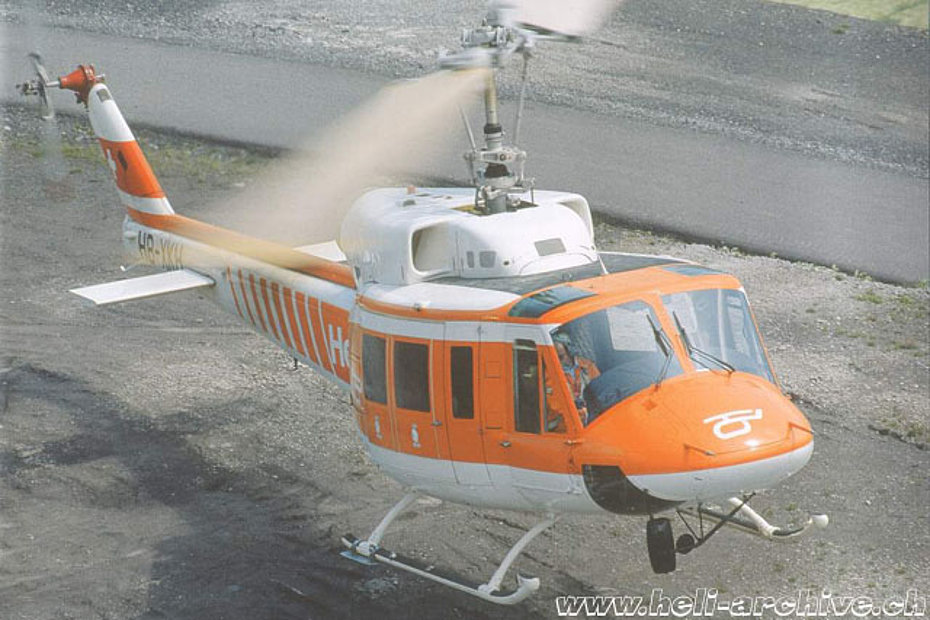
Transition on the Bell 214B-1 Big Lifter
Just recovered from that big scare Jean-Bernard Schmid went back to the controls. On June 27, he followed in Belp/BE the transition course on the Bell 214B-1 Big Lifter D-HOOK with the instructor K. Müller. In fact Heliswiss decided to rent this big helicopter best suited to transport heavy equipment and performing aerial assembly.
A few days later on board this helicopter he started in Ems/GR the transportation of some hundreds of tons of construction material.
The excellent performance of this helicopter powered by a turbine engine of nearly 3,000 HP later convinced Heliswiss to buy it and on this same craft Schmid accumulated hundreds of hours of flight carrying out transportation of material of all types including logging and aerial assembling.
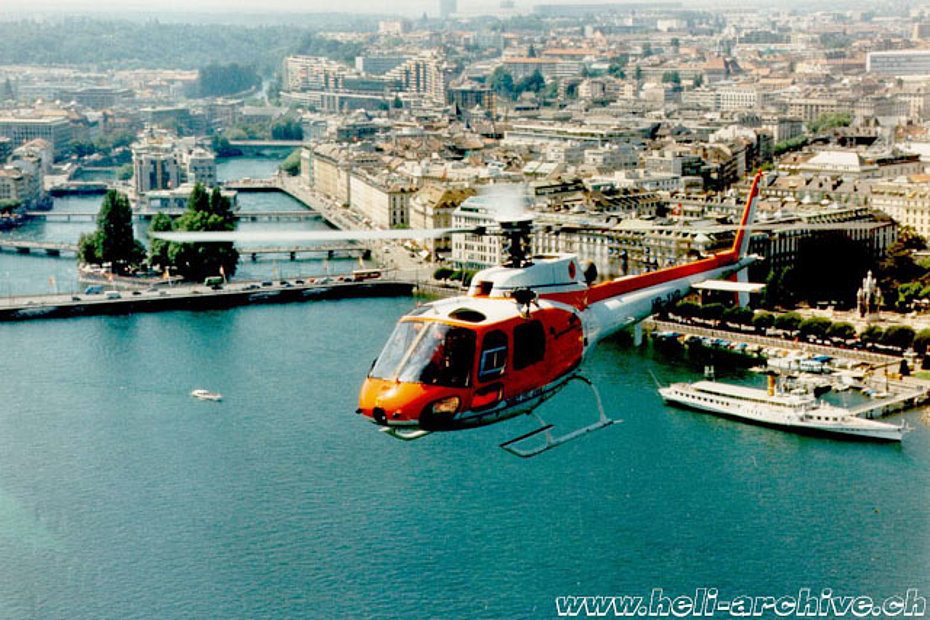
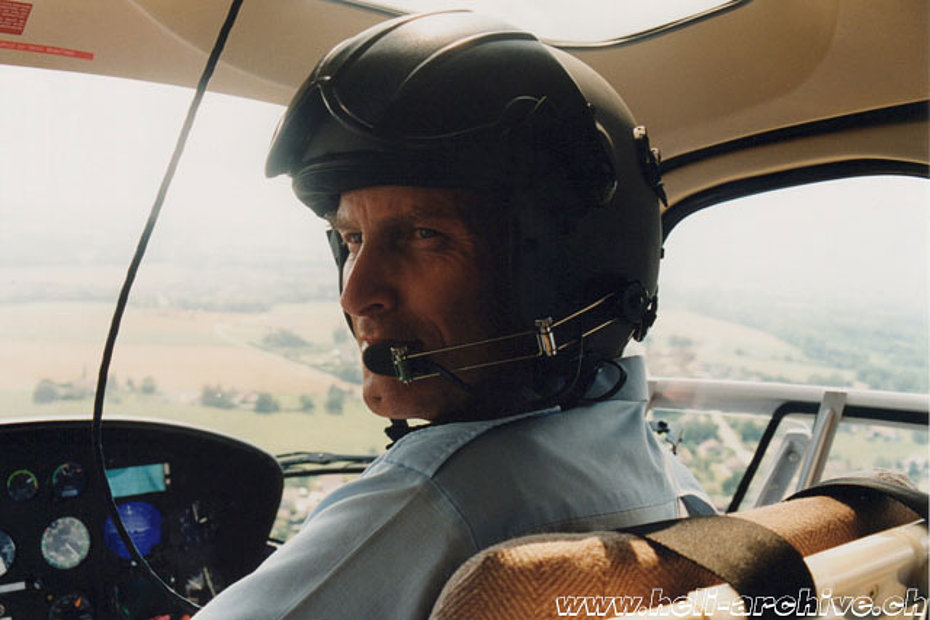
On 25 April 1979, the FOCA released Jean-Bernard Schmid a definitive permission of instructor for helicopter pilots nr. 863 with the qualification for mountain landings.
From the early '80s his flight activities were divided between piloting the Bell 214B-1 Big Lifter and instructing pilots mainly on the Bell 47 series (G2, G3B-1, Soloy).
Engine failure
Another date that certainly remained in the memory of Jean-Bernard Schmid was February 25, 1982. On that day, while he was at the controls of the Agusta-Bell 204B HB-XKL he was victim of an accident caused by one of the rare cases of helicopter engine failure registered in Switzerland.
While transporting a mast weighing about 1,000 kg due to be deposited on top of the building for sciences at the University of Bern, the turbine suddenly suffered a loss of power and the helicopter immediately began to lose altitude. Instinctively, he dropped the suspended load that fell in the garden below and tried to land the helicopter on the roof of the building. The Agusta-Bell 204B, however, overturned on its right side and the pilot broke three vertebrae. Fortunately no other person was involved, and it was a miracle because several people were around to see the helicopter in action.
Because of the serious back injuries the pilot resumed its activity only after a break of more than three months.
VIP transport
In June 1984, during the visit to Switzerland of Pope John Paul II, Jean-Bernard Schmid was chosen as pilot to carry the retinue of the Supreme Pontiff. Along with mechanic Peter Aegerter he was busy for a few days in this very special mission.
Given his considerable flying experience the Federal Council on July 9, 1985 appointed Jean-Bernard Schmid member of the Swiss Accident Investigation Board (SAIB). Some year later, from January 1, 1995 he was appointed vice-chairman of the same board.
With Geneva Civil Defence
In late April 1988, after 20 years of service with Heliswiss and with a flying experience of 10'000h, Jean-Bernard Schmid decided to left this company.
As of May 1, 1988 he began working as a pilot at the "Service hélicoptère de la Protection civile" of Geneva which at that time owned the helicopter AS 350B Ecureuil HB-XBC. With him there was another pilot, François Gindre, who was in charge of the base.
On 11 May with the instructor George Castella (which was replaced by the same Schmid) he completed the transition course on the new helicopter. With the Civil defence he was mainly engaged in air ambulance flights, search and surveillance, VIP transport and photographic flights.
In January 1989 in his spare time, always with instructor Castella, he effected in Geneva the transition course on the Robinson R-22, thus adding another helicopter to the long list of those he had already flown.
Since the Civil defence had decided to purchase a more powerful helicopter, the following year, between 5 and 6 June, he did in Marignane (France) the transition course on the AS 350B2 Ecureuil.
The pilot activities on behalf of Civil defence continued until December 7, 1998 when according to his flight books he logged his last flight at the controls of the AS 350B2 Ecureuil HB-XVB. By that time he had logged 11'427h57' flight time and 46'991 landings.
Meanwhile some health problems appeared which forced him to prematurely cease his flight activity.
Once his flight activity finished, he devoted himself to his favourite hobbies, such as hiking in the mountains and the restoration of old furniture.
Unfortunately, only a few years after his retirement he was diagnosed with an incurable disease after which he died on August 6, 2001 at the hospital of Monthey.
Jean-Bernard Schmid is remembered by his colleagues as a very capable, competent person and of course a skillful pilot.
During his career as a helicopter pilot he had carried out almost every task, making a significant contribution to the development of Heliswiss and its activities, particularly in the field of aerial assembly.
The long list of helicopters registered on his license includes the following machines: Bell 47 (over 2'100h), Sikorsky S-55 Sikorsky S-58/S-58T (over 1'450h), Hiller UH-12E (540H) Hiller SL-4, FH1100, Agusta-Bell 204B (over 2'400h), Bell 205, Bell 214B-1 (over 1'650h), Bell 206 Jet Ranger (over 650h), SA 315B Lama, SA 3160/SA 319B Alouette 3 SA 318C Alouette 2, Hughes 300, Hughes 500, Robinson R-22, AS 350B/B2 Ecureuil (over 1'400h).
HAB 09/2015


